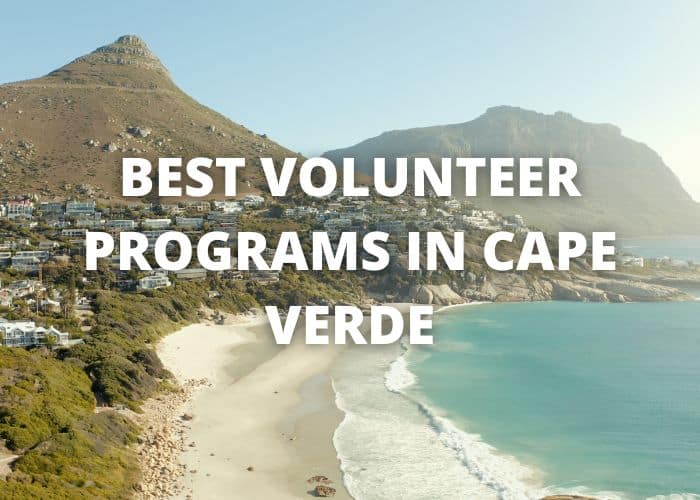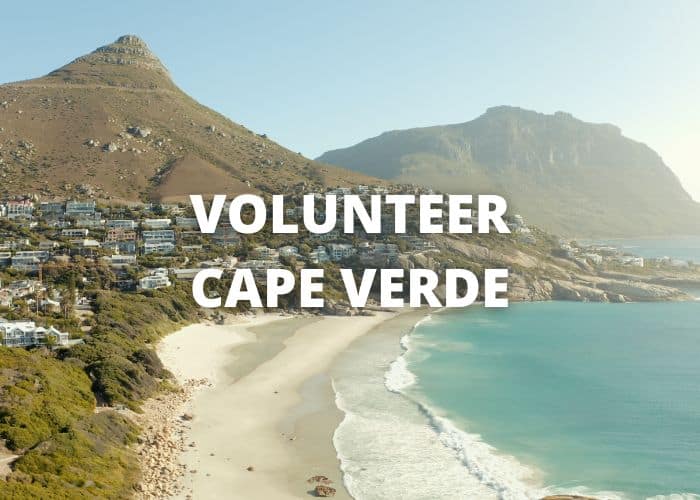Cape Verde
Best Time to Visit Cape Verde
If you’re planning a trip to Cape Verde, you may wonder when is the best time to visit. November, December, and February are some of the best times to visit this gorgeous island. You’ll find plenty of activities to enjoy during these three months. These are the months when you can expect the best weather conditions for water sports.

November
There are a number of factors that determine when is the best time to visit Cape Verde. The weather, the cost of flights and accommodation, and the peak travel periods all factor in. For example, the temperature in Praia averages around 28°F, and on hotter days, it can rise to as high as 29°F. While the temperatures are pleasant year-round, the islands can be chilly during the winter months.
The rainy season lasts from July to October in Cape Verde. The heaviest rainfall occurs in September. But the rains are usually short and light, and temperatures remain comfortably warm. Afterward, the sun comes out, and the islands become green and lush.
The best time to visit Cape Verde depends on the activities that you plan to do. During the winter, temperatures are slightly lower, but you’ll enjoy the sunshine more than in the summer months. If you’re interested in whale watching, then you’ll probably want to visit Cape Verde in the summer months.
The rainy season in Cape Verde does not last too long. However, it can bring with it flash floods and heavy rainfall. Luckily, it should be over by December. Visiting during the month of January or February can help you explore the country’s endemic species and other interesting areas.
The coldest month in Cape Verde is January. The temperature remains between 24 degrees Celsius and 30 degrees. But even then, you can enjoy the azure waters and pristine beaches. During January, there are many ceremonies and festivals, including the famous Carnival in Mindelo. February is also the perfect time for water sports and excursions.
November in Cape Verde is a pleasant time to visit. The average temperature is 77 degrees Fahrenheit (25 degrees Celsius) during the day, and there is very little humidity. Nighttime temperatures are cool, and many travelers opt for air conditioning. Rainfall in November averages 0.2 inches or 5 millimeters.
During this time, the island experiences its biggest festival. Often compared to Rio de Janeiro’s Big Bash, this festival is a lively and colorful affair. The festival dates can vary each year, so it’s best to check out the date before planning your visit.
If you’re looking for an adventurous holiday, consider snorkeling and scuba diving. The two activities are very popular and easy to arrange. You can rent swimsuits and snorkel gear on Sal or Boa Vista, and can then head into the ocean to explore the island’s marine life. However, snorkeling is not recommended in shallow water as swimfins can damage coral.
The island has a tropical climate, which means temperatures can be quite cool in November. The average high is only 28 degrees Celsius. November also has higher winds, which increase the size of the waves. For this reason, November is the perfect time for those who enjoy water sports. Despite the weather conditions, the water is usually warm enough for swimming.
December
The best time to visit Cape Verde is during the spring and autumn months. The country enjoys a tropical climate with warm temperatures. During the dry season (November to June), temperatures can reach up to 77 degrees Fahrenheit. December and February bring strong winds, called harmattan. These winds can reduce visibility, but they are great for windsurfing.
The climate is tropical with very little rain. Temperatures are pleasant year-round, but they are a little bit cooler in the mountains and during the rainy season (August to October). The island has warm temperatures from February to June and cool weather from August to December.
The best time to visit Cape Verde is between November and June, with temperatures ranging from 22 degrees to 27 degrees Celsius. It is ideal for whale watching during this time, but the islands are warm all year round. Temperatures average around 27 degrees Celsius, and temperatures are moderate in other months.
Temperatures in December are pleasant. On average, the island gets six hours of sunshine a day. At night, the temperature drops to twenty degrees. Even with a drop in temperature, water sports remain popular throughout December. Almost no rain falls during December, and snowfall is almost unheard of. The island only has a few hailstorms per decade.
December is the best time to visit Cape Verdes if you want to avoid the high tourist season. The temperatures are pleasant throughout the year and you will have sunshine throughout your holiday. The island is a popular destination for holidaymakers from northern Europe. However, many north Europeans opt for an all-inclusive resort and miss out on an authentic Cape Verdean experience. If you are looking for a more authentic experience, stay in Santiago, a beautiful northern town next to the Serra Malagueta Natural Park. Alternatively, visit Praia, the capital city.
November and December have similar temperatures to March and April. Both months are great for swimming in the warm waters of the ocean and enjoying the different islands. The volcanic island of Fogo, Santo Antao and the beautiful flora and scenery of Brava are perfect for exploring the islands. The average temperature is around twenty-three degrees Celsius during these months. The winds pick up in November.
February
Although winter months can bring colder temperatures, February is one of the best times to visit Cape Verde. With more than 10 hours of sunshine, February is the ideal time to enjoy water sports and sightseeing. You can even try kite surfing or other water sports in February. The constant breeze makes for ideal conditions for kite surfing. There are a lot of festivals and celebrations during this month, including the Carnival of Mindelo.
The most popular time to visit Cape Verde is from February through June. The days are long and sunny, and average temperatures are around 23°C (73°F). The islands are more sheltered from the harsh winds of the Atlantic, which make them cooler in the summer. Light clothing is recommended all year long, but you’ll want to pack light in midsummer. Lightweight shoes are also recommended, especially if you plan on taking hikes.
The carnival takes place in the capital city, Santiago, during February. It lasts for three or four days and includes many parades and festivities. For a truly authentic Carnival experience, go during this time of year. There are also many opportunities to participate in other cultural events in the area.
Temperatures in Cape Verde vary, but are always pleasant. The hottest month is September, and the coolest month is February. Water temperatures average between 23 and 26degC throughout the year. While the climate in Cape Verde is generally sunny, there are occasional periods of rain from early summer to early autumn. While rainy seasons can be unpleasant, they are often a welcome relief from the high temperatures.
There are plenty of water sports available on the islands of Cape Verde. Snorkeling and scuba diving are two popular options. Both activities are easy to do on the islands of Sal and Boa Vista. You can also choose to join in fishing expeditions with locals and cook up fresh fish. The water conditions vary from one island to another, so it’s important to check the conditions of the sea before embarking on any water sports.
Despite the colder weather, February is the ideal time to visit Cape Verde if you’re looking for some sun, warmth, and water sports. In addition to the warm temperatures, the islands host a world-famous Carnival. During this month, you can also enjoy the vibrant festival atmosphere in Mindelo, a town on the island of Sao Vicente.

Cape Verde
Top 10 Things to Do in Cape Verde
Cape Verde is an island nation in the central Atlantic Ocean. It consists of ten volcanic islands. The total land area is 4,033 square kilometers. The country is known for its stunning scenery and friendly people. There are several things to do in Cape Verde, including horse riding tours and fishing excursions.

Cidade Velha
Cidade Velha is a small but beautiful city on the island of Cape Verde. With its history dating back to 1462, it is one of the oldest European settlements in the tropics. In the past, it was a major port and center for trade. Today, the city is home to several attractions and is a great place to explore.
The port of Cidade Velha was used by Vasco da Gama in 1497, Christopher Columbus in 1498, and Ferdinand Magellan in 1522. These men used the port on their way around the world. The town also has one of the world’s oldest colonial churches, Nossa Senhora does Rosario, built in 1495. In 1533, the city became the seat of Santiago de Cabo Verde.
The town is home to the first European settlement in the tropics. In the 16th century, Cidade Velha became a major slave trading port. The slave trade made it the second richest city in the Portuguese realm. The town still has its original streets and many interesting buildings. There are also two churches and the royal fortress.
Cidade Velha is an ideal destination for people who love history, culture, and art. There are many historical sites and museums to explore, as well as several hotels with serviced accommodations.
Horseriding tours
If you are looking for an adrenaline-fueled adventure, Cape Verde has plenty of horseriding tours to choose from. Tours are available from most of the islands in the region. The best time to take one is at sunset. The tour starts in Santa Maria, a gorgeous beach area with expansive salt flats. This tour lasts about six hours and includes a pick-up from your hotel.
While touring the island’s natural beauty, you can also take in the live music at the local entertainment centers. Live music is a fun way to mingle with locals. This is a thrill-filled activity that you won’t soon forget.
If you like to explore the island’s natural landscapes by horseback, Cape Verde offers horseback city tours on its island of Boa Vista and Sal. These tours can be booked online or through a local travel agent. Prices are considerably lower if you book a tour without a guide.
A visit to Cape Verde during spring is a special opportunity to witness the turtle migration. This beautiful species makes its way to the island to lay its eggs in the sand. During this time, you can join a tour that includes a short briefing and half-hour navigation. The tour also includes a marine biologist to answer your questions about the local wildlife.
Another activity that is unique to the island is a zip-line tour of the island. This exciting adventure offers adrenaline rushes and beautiful landscapes. With a guide on hand, you can see the island from a bird’s eye perspective.
Fishing tours
When visiting Cape Verde, one of the best activities is fishing. During the day, you can take a fishing tour with a licensed guide and spend time in the water. The fishing trips take place in a variety of locations. From the seashore to the rocky hills, you can enjoy the scenery while you’re on a fishing trip.
Before embarking on your fishing tour, you’ll need to have your license and tackle. Most fishing charters in Cape Verde provide licenses and tackle for their customers. Some of them also host live music performances in the local entertainment centers. The whole experience is exciting and relaxing.
The fishing tours in Cape Verde are very popular. You can join guided fishing trips on most of the islands. Some of the best destinations are Boa Vista and Sal. These islands are known for their crystal-clear waters and a wide variety of fish species.
Apart from fishing, the island also has a variety of excursions available. Some of these include visits to other islands, a traditional Cape Verdean evening, big game fishing, and whale watching. The area is also a haven for kite and windsurfing enthusiasts.
The weather in Cape Verde is tropical with temperatures of 20 to 28 degrees Celsius, or 70 to 85 degrees Fahrenheit. The weather is warm enough to enjoy hiking and swimming during the day, but nights can be a little cool. In August and September, the rainy season is likely to increase, but the volume is still minimal when compared to other tropical climates.
Turtle hatchery
If you love turtles, you may be interested in visiting a turtle hatchery in Cape Verde. This is a fantastic way to support conservation efforts. The hatchery is a great place to see baby turtles being born, and you may even catch a glimpse of them as they head to sea. You can also enjoy a tour of the hatchery’s grounds, where you can watch the turtles lay eggs.
Turtle conservation is an important issue to the local population, and the government of Cape Verde is working to protect them. In 2017, the government made turtle killing illegal on the island. In 2007, two people on the island of Sal became concerned with the welfare of the turtles and started a turtle hatchery project. The organizations SOS Tartarugas and Projeto Biodiversidade were established by these conservationists, as was the hatchery.
Turtles are also threatened by global warming. This is due to a number of factors. Rising temperatures can skew the gender ratio of turtles since the temperature of the sand egg determines the sex of the hatchling. On the island of Maio, for instance, nearly 100 percent of hatchlings were female. This reduced male population has detrimental effects on reproduction and decreases genetic diversity, which hinders the turtle’s ability to adapt to changes in the environment. As a result, turtle conservation efforts are focusing on preserving nesting females.
Watching turtles is a unique experience in Cape Verde. You can join one of the guided tours, and the guides and volunteers are experts in turtle protection. There are several places to see nesting turtles in Cape Verde, and they are accessible only at certain times of the year.
You can choose from a variety of volunteer programs in Cape Verde. Most resorts and hotels prefer to choose their volunteers before the tourist season starts, but there are some programs that are available all year round. A Cape Verde vacation is a fantastic way to give back and make lasting memories. The country is often referred to as a paradise on Earth, and there are numerous opportunities to make a difference.

Abroad Escape
Join Abroad Escape and embark on an extraordinary journey in Cape Verde! Discover the thrill of making a difference by immersing yourself in the captivating beauty of this destination as a valued volunteer. In Cape Verde, we present you with a chance to design a personalized itinerary within our exceptional and meaningful volunteer programs.
PHCV
PHCV is an organization that provides healthcare to the people of Cape Verde. It was founded by members of the Beth Israel Deaconess Medical Center and has partnered with local authorities and healthcare professionals to provide health care to the locals. The organization is able to accomplish its mission through the help of volunteers.
Volunteers can work with local communities in Cape Verde in a variety of ways. Some of these projects involve teaching English or French to children, or helping out with community work. Other projects involve health talks and health education for children. Some of these projects are long-term while others are short-term. In addition to providing healthcare to the people, volunteers can also help out in schools and support programs to help the animals and the environment.
A key factor that hinders malaria programme progress in Cape Verde is decentralization. The local health authorities are not equipped to supervise programme activities in the peripheral areas. This means that accountability for programme quality is unclear. Furthermore, the programme has not been consistent in its implementation.
Go Volunteer Africa
Volunteers can work in a variety of fields, including education, conservation, and health. Some programs will even include teaching English and French to local children. Others will provide hands-on assistance in the development of a school or community project. Schools are an important resource for local communities, as they offer much-needed education. Many schools also have health talks and sports activities for children. In addition, schools are important community centers, where volunteers can network and share their skills with others.
Volunteers can get involved in environmental projects, such as planting trees. Some programs will also help develop the economy. There are several projects in Cape Verde with GoEco. Volunteers will teach English to local children, contribute to community development efforts, and learn about the culture and history of the island.
Volunteers can also participate in marine conservation and education initiatives. For example, volunteers will work with marine biologists to track the behavior of sharks and go on “chum trips” to attract them close to a research boat. Other volunteer opportunities may include observing whales, dolphins, and penguins.
Volunteers can also become coaches at local schools. In Cape Town, the local school system has only recently added physical education to the curriculum, and schools are still building up their resources. As a result, volunteers will serve as mentors and help with lessons. The volunteers will help young people develop healthy habits and become more physically fit.
Volunteers can make a real difference in a country by helping with education. A lack of education is one of the biggest problems facing many countries in Africa. Volunteers can assist children in Zambia or help women groups and adults get a better education.
Atoll
Volunteer programs in the Atolls of Cape Verde are an excellent way to explore the country’s natural beauty. Whether you’re passionate about wildlife conservation or wish to learn more about the local culture, there’s a program for you. This beautiful island nation is home to the endangered Loggerhead sea turtle, which nests on its beaches. Volunteers can participate in a variety of conservation activities and get hands-on experience, while working in a friendly environment.
Volunteers can help educate children in Cape Verde by teaching them English, French, or health lessons. These programs benefit both local children and volunteers, and provide much-needed education. These programs also help develop arts and sports activities and provide community gathering places. Volunteer opportunities in Cape Verde are available for short-term projects, as well.
RAD-AID has expanded its program to Sao Filipe Regional Hospital, where it can now perform ultrasounds and radiography. This project has also helped install a small-scale picture archiving and communication system (PACS), so patients can bring home their images without the need for interpreters. The team also hopes to expand its partnership to other Cape Verdean islands.
Volunteer programs in the Atoll are a great way to experience a new culture. Volunteers can learn the language and the local culture while engaging in exciting adventures. A week-long cultural immersion can also prove to be a very rewarding experience. Volunteers can also opt for an English-teaching project or even a childcare project. The latter is especially rewarding, as they get to help build a better future for the local children.
Cape Verde has a large diaspora, with a large population in the United States and Portugal. It is a member of the African Union. Since the early 1990s, the country has been governed by a stable representative democracy. Its economy is service-oriented, with an increasing focus on tourism.
Cape Verde
Volunteer Cape Verde
Join Abroad Escape and embark on an extraordinary journey in Cape Verde! Discover the thrill of making a difference by immersing yourself in the captivating beauty of this destination as a valued In Cape Verde, we present you with…
Volunteering in Cape Verde is a great way to learn about local culture and help with local projects. During your week in Cape Verde, you will spend time getting to know locals and experiencing the culture firsthand. You’ll also have a chance to participate in a cultural experience in an environment that’s untouched by mass tourism.
Join Abroad Escape and embark on an extraordinary journey in Cape Verde! Discover the thrill of making a difference by immersing yourself in the captivating beauty of this destination as a valued volunteer. In Cape Verde, we present you with a chance to design a personalized itinerary within our exceptional and meaningful volunteer programs.

Why volunteer in Cape Verde?
Volunteering in Cape Verde is a wonderful opportunity to experience life in an island nation that is unique in many ways. This small nation is home to ten volcanic islands and is renowned for its stunning landscapes. Its population is relatively low (7%) and its schools are free and open to all. Volunteers may choose to help with community work or teach English in the local area. Other opportunities include protecting the island’s biodiversity. Volunteers who wish to work with sea turtles may choose to help research the endangered species of these creatures.
Volunteers should be aware of the country’s health and safety laws. They should have the appropriate vaccinations for the region they are volunteering in, including rabies and yellow fever. They should also wear protective clothing, including a mosquito net. While vaccines can protect against many of the common diseases, there are some risks that are not preventable. You should also take precautions when preparing your trip.
One of the reasons volunteers should consider Cape Verde is to help conserve turtles. Many loggerhead turtles nest on the beaches of the island, and volunteers can assist with conservation programs that protect these amazing animals. Volunteering in Cape Verde also allows you to experience the country’s nature and culture in a way that many tourists don’t. While you’re in the country, you can explore hiking trails and enjoy the local culture off the beaten path.
Why Travel to Cape Verde?
If you are looking for an adventure that will leave a lasting impression, volunteer in Cape Verde. It is a multicultural nation and a popular destination for tourists. Whether you want to help the locals in their daily life, or you want to help protect a native species, you can do so through a conservation program. This is an ideal destination for those who appreciate nature and would like to make a difference in the community.
The Republic of Cape Verde is made up of 10 volcanic islands off the west coast of Africa. These islands are part of an ecoregion of their own, and contain a diverse range of plants, animals, and reptiles. The islands are 450 kilometers off the west coast of Africa and have a dry, arid climate.
If you’re a passionate nature lover, you can also help protect endangered sea turtles and humpback whales. There are also a number of foundations and volunteer opportunities that combine eco-tourism with community service. For example, you can teach English, do community work, or protect the natural and cultural heritage of Cape Verde by volunteering to help with the conservation of sea turtles.
Volunteering in Cape Verde is the perfect way to make a lasting impact. The islands are home to a diverse ecosystem with rich marine and terrestrial species. The third largest nesting site for Loggerhead sea turtles in the world is in Cape Verde.
Volunteer Opportunities in Cape Verde
Volunteer opportunities in Cape Verde are a wonderful way to experience this beautiful island country. Volunteers will have the opportunity to assist with conservation efforts on one of the world’s most beautiful beaches, and many programs focus on local communities. Volunteers can choose to work on a variety of projects, from building infrastructure to helping protect endangered species. While most volunteer projects are based in the capital of Praia, many also operate in rural areas where the economy has suffered.
Volunteers will gain valuable experience in local communities, and many programs offer a cultural immersion experience. Volunteers will spend time exploring the local culture and helping to improve the lives of local residents. A weeklong project can offer a great introduction to local culture. While volunteers are working, they may also enjoy exploring the island during the weekend.
Cape Verde is a beautiful destination that is easy to reach and offers many volunteer opportunities. Whether you’re interested in helping children, animals, or a project for the environment, you’re sure to find something meaningful and rewarding in this unique country. Whether you’re looking for a long-term project or just a few months of volunteer work, Cape Verde is sure to please.
Why join Volunteer Programs in Cape Verde?
Volunteer programs in Cape Verde are a great way to experience the culture, nature, and wildlife of the country. While in the country, volunteers spend the nights on beautiful beaches and learn about the local wildlife.
Volunteers can participate in a sea turtle conservation program in Cape Verde, which supports local schools and helps protect sea turtles from extinction. While working on a volunteer project in Cape Verde, you’ll also have the opportunity to explore the area off the beaten path and explore hiking trails.
Volunteers can also work in schools to support community development initiatives in Cape Verde. They can teach English, French, or even health lessons to the children. Schools in the region are critical for the education of local children. Besides providing education, schools also provide opportunities for sports activities, health talks, and community gatherings.
Volunteers who choose to live in Cape Verde should be aware of the risks of contracting various diseases. Vaccinations are recommended. Volunteers are advised to undergo typhoid, yellow fever, and rabies shots. Volunteers should also wear mosquito repellent. These vaccines can only prevent certain diseases. Other precautions must be taken to protect volunteers and their host communities.
-

 South Korea3 years ago
South Korea3 years agoBest Volunteer Programs in South Korea
-

 Adventure Travel2 years ago
Adventure Travel2 years agoWhat Are the Challenges of Adventure Tourism?
-

 Volontariat à l'étranger3 years ago
Volontariat à l'étranger3 years agoVolontariat Thaïlande
-

 Freiwilligenarbeit im Ausland3 years ago
Freiwilligenarbeit im Ausland3 years agoFreiwilligenarbeit Thailand
-

 Vrijwilligerswerk3 years ago
Vrijwilligerswerk3 years agoVrijwilligerswerk Thailand
-

 Adventure Travel2 years ago
Adventure Travel2 years agoTypes of Adventure Tourism
-

 Freiwilligenarbeit im Ausland3 years ago
Freiwilligenarbeit im Ausland3 years agoFreiwilligenarbeit Laos
-

 2 years ago
2 years agoTop 10 Best Cities to Live in the World (2023) World’s Best Places to Live





















